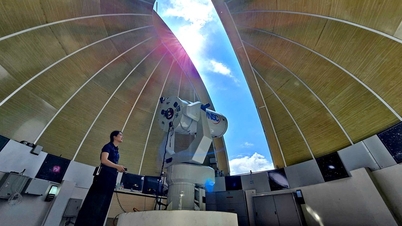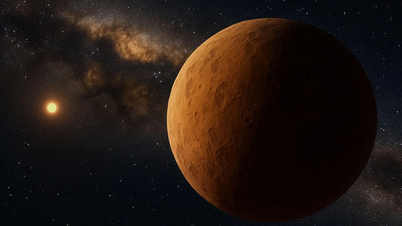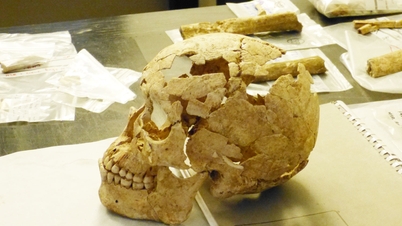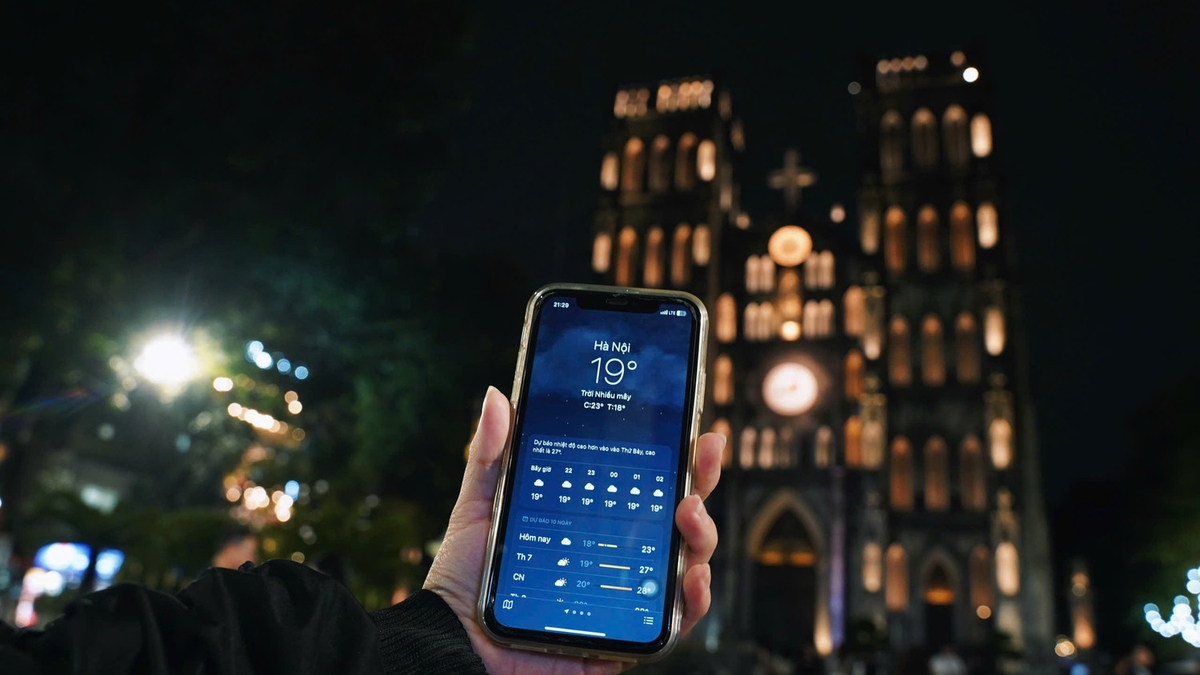(NLDO) - Scientists from the Search for Extraterrestrial Intelligence (SETI - USA) have found a "treasure" in data left by the Arecibo observatory.
According to Live Science, SETI scientists have successfully unlocked the secrets of signals from "cosmic lighthouses" powered by dead stars by analyzing data collected by the Arecibo observatory before its collapse.
Arecibo is one of the world's most powerful radio observatories, famous for its mission to send messages to the globular star cluster M13 in the hopes that aliens will catch them.
But on December 1, 2020, Arecibo's 305-meter-wide main dish shattered due to a cable break, ending nearly four decades of service.

The Arecibo International Observatory in Puerto Rico, with its main dish shattered after a 2020 incident caused by the combined effects of a hurricane and deterioration - Photo: GIZMODO
Scrutinizing the vast trove of data left behind by this celestial explorer, a team of scientists led by Dr Sofia Sheikh from the SETI Institute looked at how signals from pulsars are distorted as they travel through space.
Pulsars are a type of neutron star, the remnants of massive dead stars. Compared to other neutron stars, pulsars are more powerful and bizarre because they spin extremely fast – up to 700 times per second – and continuously emit fierce beams of radiation that sweep across the universe as they spin.
Arecibo picked up several such “dead” signals before it collapsed. This was accompanied by a strong suspicion: Something had likely interfered with the signals on their way to Earth.
The researchers looked specifically at 23 pulsars, including six that had never been studied before.
They found something interfering with this signal, a discovery of great value to astronomy, although not aliens as expected.
It's what they call a "diffracted interstellar flicker" (DISS), caused by charged particles in the interstellar medium that create distortions in the radio signals transmitted from the pulsar to Earth's observatories.
The study also found that the bandwidth of the pulsar signal is wider than current models, suggesting that to continue to study the universe accurately, humanity will need to adjust some of the widely accepted cosmological models.
Additionally, galactic structures such as the spiral arms of the Milky Way galaxy also contribute to DISS.
Understanding how pulsar signals work is important because when viewed in large arrays, the extremely precise periodic signals from pulsars can be used as a timing mechanism.
For example, this mechanism is used as a basis for measuring small distortions in space-time caused by gravitational waves.
"Years after Arecibo's collapse, its data continue to unlock important information that can advance our understanding of the galaxy and enhance our ability to study phenomena such as gravitational waves," the authors wrote in The Astrophysical Journal.
Source: https://nld.com.vn/truoc-khi-vo-tan-dai-thien-van-nhan-tin-hieu-la-tu-coi-chet-196241209093612883.htm




![[Photo] Draft documents of the 14th Party Congress reach people at the Commune Cultural Post Offices](https://vphoto.vietnam.vn/thumb/1200x675/vietnam/resource/IMAGE/2025/10/28/1761642182616_du-thao-tai-tinh-hung-yen-4070-5235-jpg.webp)

![[Photo] President Luong Cuong attends the 80th Anniversary of the Traditional Day of the Armed Forces of Military Region 3](https://vphoto.vietnam.vn/thumb/1200x675/vietnam/resource/IMAGE/2025/10/28/1761635584312_ndo_br_1-jpg.webp)






























![[Photo] The 5th Patriotic Emulation Congress of the Central Inspection Commission](https://vphoto.vietnam.vn/thumb/1200x675/vietnam/resource/IMAGE/2025/10/27/1761566862838_ndo_br_1-1858-jpg.webp)














































































Comment (0)